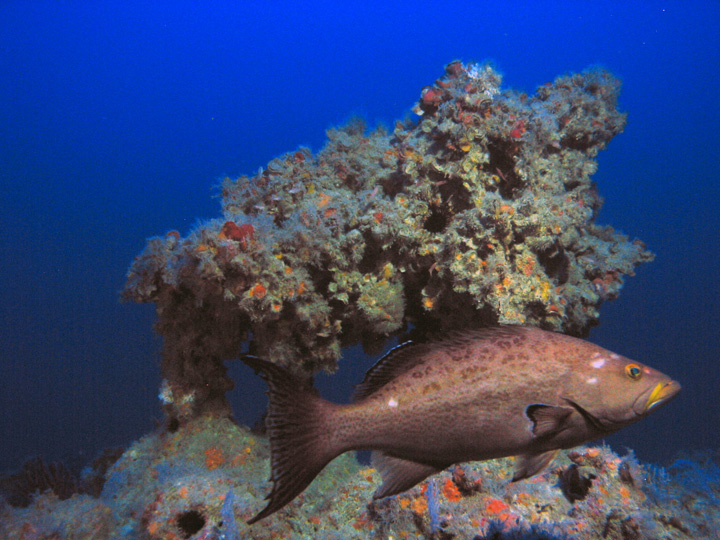
This leg of the expedition will use a new remotely operated vehicle, the SubAtlantic Mohawk 18. Credit: University of North Carolina Wilmington.
A NOAA-funded investigation of the relatively healthy, deep, mesophotic reefs of Pulley Ridge (off the southwest coast of Florida) begins the second leg of this summer's expedition. From August 14-28, the University of Miami's R/V F.G. Walton Smith will launch a surface driven remotely operated vehicle (ROV) to photograph the benthic and fish communities, as well as collect fish and invertebrate samples. The collected data helps researchers understand whether Pulley Ridge helps sustain the coral reef communities in the Florida Keys and Dry Tortugas and determine if the area would benefit from further protection.
The Coral Ecosystem Connectivity 2014 expedition from Pulley Ridge to the Florida Keys is funded by NOAA's National Centers for Coastal Ocean Science and Office of Ocean Exploration and Research in partnership with NOAA's Office of National Marine Sanctuaries, National Marine Fisheries Service's Southeast Regional Office, and Gulf of Mexico Regional Collaboration Team. The project is led by the University of Miami, and represents a collaboration of over 35 scientists at eleven different universities. This is the project's third field season.

Ascamp grouper at 320 feet off the Dry Tortugas. Credit: Cooperative Institute for Exploration, Research and Technology.
To learn more about this year's expedition, check out the Coral Ecosystem Connectivity 2014 site.
See Coral Ecosystem Connectivity 2013 to read about last year's field season.
For more information, contact Kimberly Puglise.
 Official websites use .gov
A .gov website belongs to an official government organization in the United States.
Official websites use .gov
A .gov website belongs to an official government organization in the United States. Secure .gov websites use HTTPS
A lock or https:// means you’ve safely connected to the .gov website. Share sensitive information only on official, secure websites.
Secure .gov websites use HTTPS
A lock or https:// means you’ve safely connected to the .gov website. Share sensitive information only on official, secure websites.